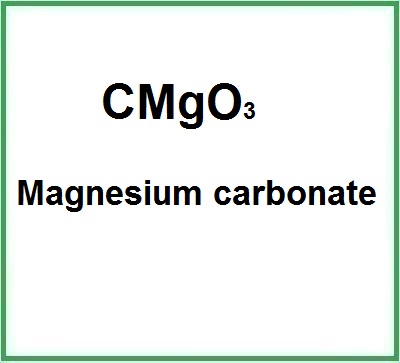![]() Magnesium carbonate
Magnesium carbonate
Rating : 6
| Evaluation | N. Experts | Evaluation | N. Experts |
|---|---|---|---|
| 1 | 6 | ||
| 2 | 7 | ||
| 3 | 8 | ||
| 4 | 9 | ||
| 5 | 10 |
Pros:
Cardioprotective (1)Cons:
Avoid excessive amounts (1)9 pts from A_Partyns
| Sign up to vote this object, vote his reviews and to contribute to Tiiips.Evaluate | Where is this found? |
| "Magnesium carbonate studies" about Magnesium carbonate Review Consensus 10 by A_Partyns (12948 pt) | 2023-Jan-24 10:08 |
| Read the full Tiiip | (Send your comment) |
Compendium of the most significant studies with reference to properties, intake, effects.
Hutchison AJ, Wilkie M. Use of magnesium as a drug in chronic kidney disease. Clin Kidney J. 2012 Feb;5(Suppl 1):i62-i70. doi: 10.1093/ndtplus/sfr168.
Abstract. From chronic kidney disease (CKD) Stage 4 onwards, phosphate binders are needed in many patients to prevent the development of hyperphosphataemia, which can result in disturbed bone and mineral metabolism, cardiovascular disease and secondary hyperparathyroidism. In this review, we re-examine the use of magnesium-containing phosphate binders for patients with CKD, particularly as their use circumvents problems such as calcium loading, aluminum toxicity and the high costs associated with other agents of this class. The use of magnesium hydroxide in the 1980s has been superseded by magnesium carbonate, as the hydroxide salt was associated with poor gastrointestinal tolerability, whereas studies with magnesium carbonate show much better gastrointestinal profiles. The use of combined magnesium- and calcium-based phosphate binder regimens allows a reduction in the calcium load, and magnesium and calcium regimen comparisons show that magnesium may be as effective a phosphate binder as calcium. A large well-designed trial has recently shown that a drug combining calcium acetate and magnesium carbonate was non-inferior in terms of lowering serum phosphate to sevelamer-HCl and had an equally good tolerability profile. Because of the high cost of sevelamer and lanthanum carbonate, the use of magnesium carbonate could be advantageous and drug acquisition cost savings would compensate for the cost of introducing routine magnesium monitoring, if this is thought to be necessary and not performed anyway. Moreover, given the potential cost savings, it may be time to re-investigate magnesium-containing phosphate binders for CKD patients with further well-designed clinical research using vascular end points.
Welch K, Latifzada MA, Frykstrand S, Strømme M. Investigation of the Antibacterial Effect of Mesoporous Magnesium Carbonate. ACS Omega. 2016 Nov 30;1(5):907-914. doi: 10.1021/acsomega.6b00124.
Abstract. Mesoporous magnesium carbonate (MMC) was first presented in 2013, and this material is currently under consideration for use in a number of biotechnological applications including topical formulations. This study presents the first evaluation of the antibacterial properties of the material with mesoporous silica and two other magnesium-containing powder materials used as references. All powder materials in this study are sieved to achieve a particle size distribution between 25 and 75 μm. The Gram-positive bacterium Staphylococcus epidermidis is used as the model bacterium due to its prevalence on human skin, its likelihood of developing resistance to antibiotics, for example, from routine exposure to antibiotics secreted in sweat, and because it is found inside affected acne vulgaris pores. Quantification of bacterial viability using a metabolic activity assay with resazurin as the fluorescent indicator shows that MMC exerts a strong antibacterial effect on the bacteria and that alkalinity accounts for the major part of this effect. The results open up for further development of MMC in on-skin applications where bacterial growth inhibition without using antibiotics is deemed favorable.
Alvebratt C, Dening TJ, Åhlén M, Cheung O, Strømme M, Gogoll A, Prestidge CA, Bergström CAS. In Vitro Performance and Chemical Stability of Lipid-Based Formulations Encapsulated in a Mesoporous Magnesium Carbonate Carrier. Pharmaceutics. 2020 May 6;12(5):426. doi: 10.3390/pharmaceutics12050426.
Abstract. Lipid-based formulations can circumvent the low aqueous solubility of problematic drug compounds and increase their oral absorption. As these formulations are often physically unstable and costly to manufacture, solidification has been suggested as a way to minimize these issues. This study evaluated the physicochemical stability and in vitro performance of lipid-loaded mesoporous magnesium carbonate (MMC) particles with an average pore size of 20 nm. A medium chain lipid was loaded onto the MMC carrier via physical adsorption. A modified in vitro lipolysis setup was then used to study lipid release and digestion with 1H nuclear magnetic resonance spectroscopy. The lipid loading efficiency with different solidification techniques was also evaluated. The MMC, unlike more commonly used porous silicate carriers, dissolved during the lipolysis assay, providing a rapid release of encapsulated lipids into solution. The digestion of the dispersed lipid-loaded MMC therefore resembled that of a coarse dispersion of the lipid. The stability data demonstrated minor degradation of the lipid within the pores of the MMC particles, but storage for three months did not reveal extensive degradation. To conclude, lipids can be adsorbed onto MMC, creating a solid powder from which the lipid is readily released into the solution during in vitro digestion. The chemical stability of the formulation does however merit further attention.
El-Sharkawy HHA, Rashad YM, El-Kenawy MA, Galilah DA. Magnesium carbonate elicits defense-related genes in King Ruby grapevines against downy mildew and improves its growth, yield, and berries quality. Pestic Biochem Physiol. 2022 Jun;184:105075. doi: 10.1016/j.pestbp.2022.105075.
Abstract. Downy mildew, caused by Plasmopara viticola (Berk. and M. A. Curtis) Berl. and De Toni, is a serious disease of grapevines in general and King Ruby seedless cultivar in particular, affecting their growth and yield. Magnesium carbonate (MgCO3) is an antitranspirant, which induces stomatal closing and enhances plant growth and physiology. In this study, effect of foliar application of MgCO3 at 1 and 3% on plant resistance, growth, yield and physiology of grapevines (cv. King Ruby seedless) infected with downy mildew was investigated under field conditions....Based on these results, we can conclude that spraying with MgCO3 at 3% has effective roles in inducing the plant resistance against downy mildew, and improving the growth and yield of grapevines. Copyright © 2022 Elsevier Inc.
Agustinho BC, Ravelo A, Vinyard JR, Lobo RR, Arce-Cordero JA, Monteiro HF, Sarmikasoglou E, Bennett S, Johnson ML, Vieira ERQ, Stoffel C, Stocks SE, Faciola AP. Effects of replacing magnesium oxide with calcium-magnesium carbonate with or without sodium bicarbonate on ruminal fermentation and nutrient flow in vitro. J Dairy Sci. 2022 Apr;105(4):3090-3101. doi: 10.3168/jds.2021-20995.
Abstract. The objective of this study was to evaluate the effects of replacing magnesium oxide (MgO) with calcium-magnesium carbonate [CaMg(CO3)2] on ruminal fermentation with or without the addition of sodium bicarbonate (NaHCO3). Eight fermentors of a dual-flow continuous-culture system were distributed in a replicated (2) 4 × 4 Latin square design in a 2 × 2 factorial arrangement of treatments (magnesium sources × NaHCO3). The treatments tested were 0.21% MgO [MgO; dry matter (DM) basis; 144.8 mEq of dietary cation-anion difference (DCAD)]; 0.21% MgO + 0.50% NaHCO3 (MgO+NaHCO3; DM basis; 205.6 mEq of DCAD); 1.00% CaMg(CO3)2 [CaMg(CO3)2; DM basis; 144.8 mEq of DCAD]; and 1.00% CaMg(CO3)2 + 0.50% NaHCO3 [CaMg(CO3)2+NaHCO3; DM basis; 205.6 mEq of DCAD]. Diets were formulated to have a total of 0.28% of Mg (DM basis). The experiment consisted of 40 d, which was divided into 4 periods of 10 d each, where 7 d were used for adaptation and 3 d for sampling to determine pH, volatile fatty acids (VFA), ammonia (NH3-N), lactate, mineral solubility, N metabolism, and nutrient digestibility. The effects of Mg source [MgO vs. CaMg(CO3)2], NaHCO3 (with vs. without), and the interaction were tested with the MIXED procedure of SAS version 9.4 (SAS Institute). There was no Mg source × NaHCO3 interaction in the pH variables and mineral solubility, and Mg sources evaluated did not affect the variables related to ruminal pH and solubility of Mg. On the other hand, the inclusion of NaHCO3 increased the pH daily average, independent of Mg source, which led to a reduced time that pH was below 5.8 and decreased area under the curve. Total VFA and lactate concentration were similar among treatments regardless of NaHCO3 and Mg source; however, the molar proportion of isobutyrate and NH3-N concentration were lower in diets with CaMg(CO3)2 compared with MgO. Moreover, NaHCO3 inclusion increased NH3-N, total daily NH3-N flow, isobutyrate concentration, and acid detergent fiber digestibility. Our results showed that CaMg(CO3)2 leads to a lower NH3-N concentration and isobutyrate proportion. Therefore, because most of the tested variables were not significantly different between MgO and CaMg(CO3)2 when combined or not with NaHCO3, CaMg(CO3)2 can be a viable alternative source to replace MgO in dairy cow diets without affecting mineral solubility, ruminal pH, nutrient digestibility, total VFA, and the main ruminal VFA. Although Mg sources are known to have an alkalizing effect, NaHCO3 inclusion in diets with Mg supplementation allowed an increase in ruminal pH, as well as an increase in isobutyrate and NH3-N flow.
Gómez de la Torre J, Bergström C, Zardán Gómez de la Torre T. Increasing the Transport of Celecoxib over a Simulated Intestine Cell Membrane Model Using Mesoporous Magnesium Carbonate. Molecules. 2021 Oct 21;26(21):6353. doi: 10.3390/molecules26216353.
Abstract. In the current work, mesoporous magnesium carbonate (MMC) was used to suppress crystallization of the poorly soluble drug celecoxib (CXB). This resulted in both a higher dissolution rate and supersaturation of the substance in vitro as well as an increased transfer of CXB over a Caco-2 cell membrane mimicking the membrane in the small intestine. The CXB flux over the cell membrane showed a linear behavior over the explored time period. These results indicate that MMC may be helpful in increasing the bioavailability and obtaining a continuous release of CXB, and similar substances, in vivo. Neusilin US2 was used as a reference material and showed a more rapid initial release with subsequent crystallization of the incorporated CXB in the release media. The presented results form the foundation of future development of MMC as a potential carrier for poorly soluble drugs.
Tzanakis IP, Papadaki AN, Wei M, Kagia S, Spadidakis VV, Kallivretakis NE, Oreopoulos DG. Magnesium carbonate for phosphate control in patients on hemodialysis. A randomized controlled trial. Int Urol Nephrol. 2008;40(1):193-201. doi: 10.1007/s11255-007-9300-0.
Abstract. Background: Magnesium salts bind dietary phosphorus, but their use in renal patients is limited due to their potential for causing side effects. The aim of this study was to evaluate the efficacy and safety of magnesium carbonate (MgCO(3)) as a phosphate-binder in hemodialysis patients....Conclusion: Our study shows that MgCO(3) administered for a period of 6 months is an effective and inexpensive agent to control serum phosphate levels in hemodialysis patients. The administration of MgCO(3) in combination with a low dialysate Mg concentration avoids the risk of severe hypermagnesemia.
| Sign up to vote this object, vote his reviews and to contribute to Tiiips.EvaluateClose | (0 comments) |
| "Descrizione" about Magnesium carbonate Review Consensus 9 by A_Partyns (12948 pt) | 2023-Apr-17 09:40 |
| Read the full Tiiip | (Send your comment) |
Magnesium Carbonate is a chemical compound, magnesium salt of carbonic acid and is formed from hydrotalcite material.
Industrially, it appears in the form of a white powder.
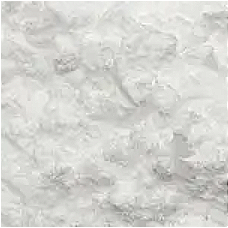
What it is used for and where
Food
It is an anti-caking agent on the European food additives list with the number E504 and used in cheeses, wines etc. and in the Colour Index International as 77713, dye.
Cosmetics
It is a restricted ingredient as IV/139, a Relevant Item in the Annexes of the European Cosmetics Regulation 1223/2009
Absorbent. Absorbs substances dispersed or dissolved in aqueous solutions, water/oil, oil/water..
Binder agent. Ingredient that is used in cosmetic, food and pharmaceutical products as an anti-caking agent with the function of making the product in which it is incorporated silky, compact and homogenous. The binder, either natural such as mucilage, gums and starches or chemical, may be in the form of a powder or liquid.
Opacifying agent. This additive is inserted into formulations that may be translucent or transparent to make them opaque and less permeable to light.
Colorant. Ingredient whose primary function is to colour the solution in which it is inserted in a temporary, semi-permanent or permanent manner, either alone or in the presence of complementary components added for colouration.
Medical
Magnesium carbonate is used against heartburn or indigestion. Unlike other magnesium salts (aspartate, citrate, gluconate, lactate, orotate, pyruvate) that are easily absorbed in the body, magnesium carbonate is slower. It is used as an effective treatment in hemodialysis patients with calcium-phosphoric problems (1) with some warning (3). In the human body it helps the development of muscles and bones.
Although positive long-term effects on coronary artery calcification have been found (2), it is believed that these studies still need to be further investigated to ensure that the product is effective.
In inappropriate doses it can cause diarrhea and stomach ache.
Magnesium salts are used in treatments for preserving the integrity of the blood system, urine pH, etc.
- aspartate
- citrate
- gluconate
- lactate
- orotate
- pyruvate
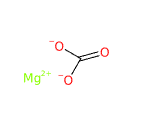 | 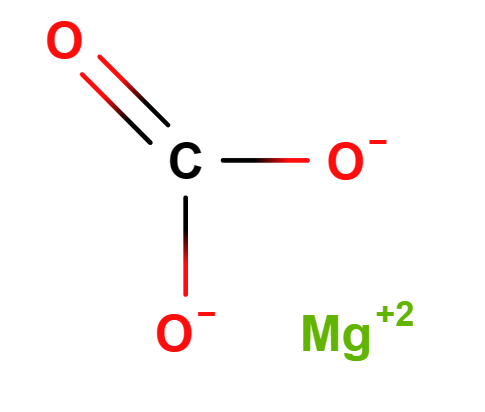 |
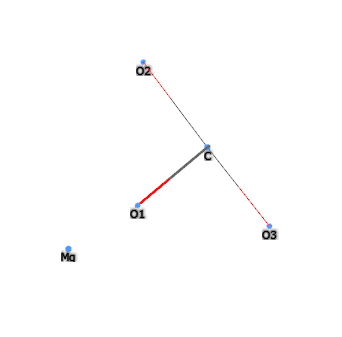 | 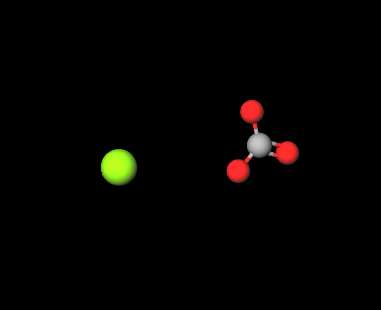 |
The most relevant studies on this ingredient have been selected with a summary of their contents:
Magnesium carbonate studies
- Molecular Formula: CMgO3 MgCO3
- Linear Formula: MgCO3 · x H2O
- Molecular Weight: 84.313 g/mol
- CAS: 546-93-0 7757-69-9 13717-00-5 13717-00-5 23389-33-5
- EC Number: 208-915-9 231-817-2 604-004-9
- UNIII: 0IHC698356
Synonyms:
- Magnesium carbonate hydrate
- magnesium carbonate (1:1) hydrate
- carbonic acid, magnesium salt (1:1), hydrate
- magnesium carbonate anhydrous
- CI 77713
- E504
- UNII-0IHC698356
- Caswell No. 530
- Magnesite dust
- Hydromagnesite
- Stan-mag magnesium carbonate
- nesquehonite
References_______________________________________________________________________
(1) Zwiech R, Dryja P, Łacina D, Króliczak V, Chrul S, Kacprzyk F. The influence of short-term magnesium carbonate treatment on calcium-phosphorus balance in dialysis patients. Wiad Lek. 2011;64(1):9-14.
Spiegel DM, Farmer B, Smits G, Chonchol M. Magnesium carbonate is an effective phosphate binder for chronic hemodialysis patients: a pilot study. J Ren Nutr. 2007 Nov;17(6):416-22. doi: 10.1053/j.jrn.2007.08.005.
(2) Spiegel DM, Farmer B. Long-term effects of magnesium carbonate on coronary artery calcification and bone mineral density in hemodialysis patients: a pilot study. Hemodial Int. 2009 Oct;13(4):453-9. doi: 10.1111/j.1542-4758.2009.00364.x.
(3) Delmez JA, Kelber J, Norword KY, Giles KS, Slatopolsky E. Magnesium carbonate as a phosphorus binder: a prospective, controlled, crossover study. Kidney Int. 1996 Jan;49(1):163-7. doi: 10.1038/ki.1996.22.
| Sign up to vote this object, vote his reviews and to contribute to Tiiips.EvaluateClose | (0 comments) |
Read other Tiiips about this object in __Italiano (2)
Component type: Chemical Main substances: Last update: 2023-01-24 09:19:26 | Chemical Risk: |


